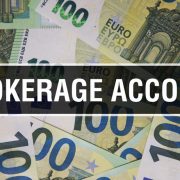A List of Potential Assets in a Self-Directed IRA
Self-Directed IRAs go back as far as the first Traditional IRAs, authorized by Congress in 1974. Since then, many people have taken advantage of these retirement accounts to build a sizeable nest egg for their retirement. Yet you’d be surprised at how many people don’t know the full range of potential asset types they can use within a Self-Directed IRA. To that end, we thought we’d create a list of potential assets you can hold—provided you follow the rules.
Real Estate Assets You Can Hold in a Self-Directed IRA
Since there are so many different types of real estate assets, we thought this one deserves its own category. Here are some of the real estate holdings you might be able to keep within an IRA:
- Single-family units for rental homes
- Multi-unit buildings
- Apartment buildings
- Condominiums
- Improved land
- Unimproved land
- Farms
- Tax liens
- Ranches
- Commercial buildings
With real estate especially, it’s important to keep in mind that there are specific rules preventing you from entering into prohibited transactions via an IRA, such as renting out a single-family unit to someone you know. Ditto for buying, say, raw land from someone you know when you purchase it with your IRA.
Business Investments within a Self-Directed IRA
This is another broad category—so broad, in fact, that it’s worth exploring each of these as their own bullet point.
- Public stocks: just like any IRA, you can hold public stocks within a Self-Directed IRA
- Mutual funds
- Stock in private companies
- LLCs
- Partnerships
It’s worth noting that in the case of LLCs, for example, it’s possible to use a Single Member LLC to create a “Checkbook IRA” arrangement in which you exercise very simple control over the checkbook of the LLC held within a Self-Directed IRA.
Other Assets You Might Be Able to Hold within a Self-Directed IRA
Now that we’ve already explored two of the broadest types of assets, it’s worth zooming in on some of the other assets. But just because we use the word “other” here does not mean that these assets are inherently lesser than the other ones mentioned so far.
- Cryptocurrencies. Obviously, this was not as much an issue in 1974 when IRAs were first allowed, but the modern-day cryptocurrencies are considered assets like any other, which means they are relatively easy to hold within a Self-Directed IRA.
- Precious metals. This is a store of value that goes back far before the Self-Directed IRA, so it’s no wonder that some types of precious metals investments (but not all) are valid within a Self-Directed IRA. However, keep in mind that you cannot keep precious metals holdings within a retirement account in a personal space, such as a safe at home.
- Private lending. Private notes can be an asset that helps an investor diversify their capital out of other markets. The trick here is in using private lending with an IRA that does not violate the rules of prohibited transactions.
- Royalty rights. Holding rights in something that generates royalty income can be a fantastic and passive way to collect money for eventual retirement use.
- Auto/commercial paper.
- Convertible notes.
There are all sorts of investments that retirement investors can turn to when using a Self-Directed IRA. The options are far more plentiful than what you can’t use. However, you do have to make sure that you live up to the rules of a Self-Directed IRA; that you avoid prohibited transactions and working with disqualified persons.
Interested in learning more about Self-Directed IRAs? Contact American IRA, LLC at 866-7500-IRA (472) for a free consultation. Download our free guides or visit us online at www.AmericanIRA.com.








